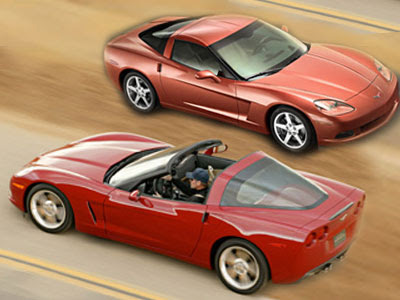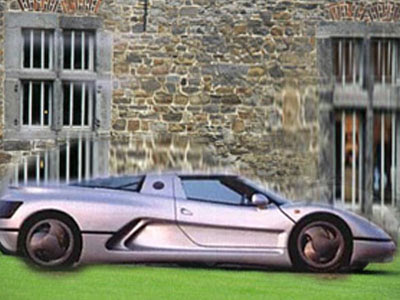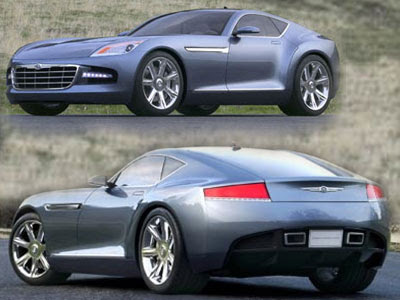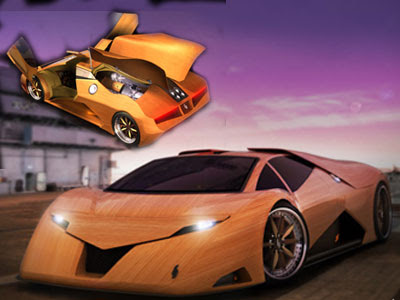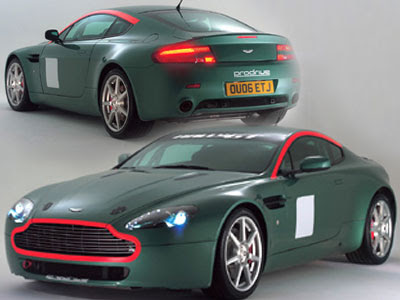Wednesday, December 22, 2010
Honda S2000 Sports Car Ultimate Edition powered by VTEC engine has won the International Engine
Posted by haho at 4:55 AMThis limited edition has been produced to mark the end of production for the award winning sports car.Honda has announced that the Honda S2000 Ultimate Edition goes on sale in Europe in March 2009.
The Honda S2000 Ultimate Edition retains its highly acclaimed 2.0 litre 9000 rpm VTEC engine and combines it with a Grand Prix White body and graphite coloured alloy wheels. The shade of the paint evokes the colour first used on Honda's 1964 F1 car and many sporting models since. The exterior colour combination with the dark metal alloy wheels and unique black S2000 badging gives a fresh look to the timeless shape of the roadster body.

The white exterior will be matched with a red leather interior and complimented by unique red colouring for stitching on the gear lever gaiter. Ultimate Editions will be marked out by their unique numbered plaques on the kickplates, denoting their position in the series.
The 2-seater sports car may now be almost 10-years old, but its 240PS 2-litre is still one of the highest output per litre and highest revving engines ever made. In recognition of its incredible power output, the Honda S2000's engine has won the International Engine of the Year category for 1.8 to 2.2 litre engines five times in its lifetime.
As the name suggests, the Honda S2000 Ultimate Edition will be the last version before global production of the model ceases altogether at the end of June 2009. Since the introduction of the Honda S2000 in 1999 until the end of 2008, Honda has sold 110,673 units worldwide - 19,987 of those in Europe.
Friday, December 17, 2010
Dave Hill, chief engineer of the Corvette and vehicle line executive for GM Performance Cars.The C6 represents a comprehensive upgrade to the Corvette.The Corvette C6 was introduced in 2005 to replace the outgoing C5 (1997 - 2004) model.
Blends technical sophistication with expressive style The sixth generation Corvette. Five inches shorter than the C5, the C6 Corvette cuts a tighter, more taut profile – with virtually no loss of usable space. More than just visual, the new dimensions make the car more agile and “tossable,” with upgrades in handling, acceleration and braking. At 0.28 coefficient of drag, the C6 is the most aerodynamically efficient Corvette ever and has improved anti-lift characteristics that enable improved high-speed stability and confidence.

A new LS2 6.0-liter small-block V-8 is the standard engine in the Corvette C6. It is based on GM’s new Gen IV small-block family of engines.
The LS2 raises the bar for standard performance in the Corvette, delivering estimated peak output levels of 400 horsepower and 400 lb.-ft. of torque. It is the largest, most powerful standard small-block engine ever offered in Corvette.
Wednesday, December 15, 2010
The TC 522 was powered by a mid-mounted 5.7 litre, twin-turbo V8. The transmission was handled by a 6 speed manual driving the rear wheels. The Spiess TC 522 had a carbon-fibre composite body. Due to its high price, and a worldwide economic slow down, the TC 522 never left the prototype stage.
Frogeye Sprite Austin Healey the first of several Sprite models.
The prominent headlights were initially intended to be flip-up units. However the cost of retractable headlights was to high, and instead they were fixed in what would have been the 'up' position. Their unusual location gave rise to the cars affectionate nickname, the "Frogeye" Sprite.
The Austin Healey Sprite MK I was powered by a 1.0 litre, inline, four cylinder engine which developed a grand total of 43 horsepower. Coupled to a four speed manual gearbox it was capable of propelling the car up to 84 mph.
The Frogeye Sprite (which was discontinued in 1961) was the first of several Sprite models. In 1962 the MK II Austin Healey Sprite was introduced. The MK II introduced several updates, the most noticeable of which was a more conventional headlight layout. From 1961 the Austin Healey Sprite was also sold as the MG Midget.
Labels: Austin Healey, race car, Spors Car
Monday, November 23, 2009
SpeedART Turbo Porsche Panamera Sports Car Saloon 4.8 liter twin turbo V8 Engine.
Posted by haho at 11:36 AM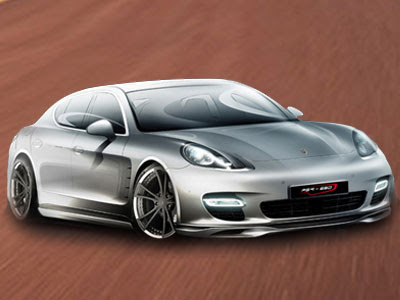
The kit brings the total output to 520bhp. The sprint of the 4.8 liter twin turbo V8 will probably be hit the 4.0 seconds. Top speed will not increase a lot but 303km/h (190mph) isn’t too bad for a four-door sedan.Set to be officially unveiled at the Essen Motor Show, the range topping PS9 features 650 hp and 890 Nm of torque thanks to bigger turbochargers, a sport exhaust system (with a sound switch), a sport catalyst, and a revised ECU. These changes enable the car to accelerate from 0-62 mph in 3.5 seconds, before hitting a top speed in excess of 200 mph. If 650 hp is too hot to handle, the company also offers more modest performance packages that allow the engine to produce 550 and 600 hp.SpeedART claims that the most powerful version of the car accelerates from zero to 100km/h (62mph) in 3.5 seconds and goes on to achieve a top speed in excess of 320km/h or 200mph.
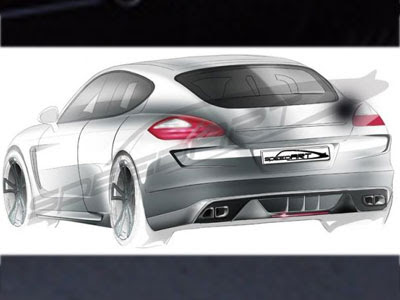
In terms of styling, the PS9 is outfitted with an aerodynamic body kit which consists of a front chin spoiler, hood vents, a rear diffuser, a roof spoiler, a modified rear bumper (with air outlets), and aggressive side skirts. Other design details include 22-inch three-piece 'LSC FORGED' wheels and the aforementioned sport exhaust system (available in polished stainless steel or matt black).Inside, the cockpit will get a SpeedART steering wheel with F1-shift paddles, real carbon-fiber trim and accents, new leather upholstery with colored stitches and a revised instrument panel.At the back, we see a new bumper, and the trapezoidal exhaust pipes. A new rear spoiler will also be mounted.

For the interior, SpeedART added a sport steering wheel with F1-shift paddles (which can be outfitted with aluminum-, wood- or carbon fiber inlays), carbon fiber trim, contrast stitching on the door panels and seats, revised instrument dials, and exclusive floor mats.
Labels: Porsche, Porsche Panamera, Sedan, SpeedART, Spors Car, Sports Saloon, Turbo
Monday, October 26, 2009
Morgan Aero SuperSports 4.8 liter BMW V8 engine Is a Luxurious Flamboyant Sports Car.
Posted by haho at 8:34 AM Morgan Aero SuperSports
Morgan Aero SuperSportsAs part of the Centenary celebrations Morgan announces a truly special model.Designed and engineered in house, the Morgan Aero SuperSports is a lightweight aluminum sports car with a luxurious specification. The interior features a comfortable combination of polished hardwoods, hand stitched leather and electronic technology to create a driving environment that is efficient, ergonomic and sumptuous. In spite of all this opulence the overall weight of the car is still minimal so the car is responsive to driver inputs and economical to run. The unique way Morgan can achieve this is down to our use of aircraft style superformed aluminum outer panels and the skills of our craftsmen to hand finish the assembly of each car.
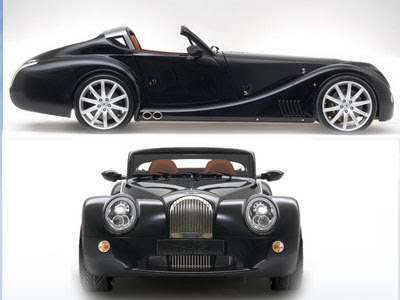 Morgan Aero SuperSports
Morgan Aero SuperSportsThe car of course benefits from the lightweight aluminum Aero chassis which is adhesively bonded for class leading rigidity. Exceeding global crash protection standards, this is also the platform used by the Morgan Aero Eight GT3 currently competing successfully in the 2009 International FIA GT3 Championship. This chassis combined with the aluminum 4.8 liter BMW V8 engine and a choice of 6 speed automatic or manual gearboxes offers an unrivalled driving experience. No other automatic car offers such dynamic power transmission.
Drawn by Matthew Humphries, and engineered for production by the experienced “Morgan Design” team, the new Aero Super Sports is due to enter production in early 2010. A deposit of £25,000 is required to ensure the supply of one of these exciting new models. It is anticipated to cost around £127,000 including VAT.Charles Morgan, Grandson of the founder said “ The Morgan Aero SuperSports is a luxurious flamboyant sports car which also remains true to Morgan’s philosophy of lightweight minimalist simplicity. It is a celebration of our love of cars and the romance of travel and is a fitting model to announce during Morgan’s Centenary year”.
Labels: Morgan, Spors Car, Sport Car Coupe, Super Sports Cars
Morgan Aero SuperSports 4.8 liter BMW V8 engine Is a Luxurious Flamboyant Sports Car.
Posted by haho at 8:34 AM Morgan Aero SuperSports
Morgan Aero SuperSportsAs part of the Centenary celebrations Morgan announces a truly special model.Designed and engineered in house, the Morgan Aero SuperSports is a lightweight aluminum sports car with a luxurious specification. The interior features a comfortable combination of polished hardwoods, hand stitched leather and electronic technology to create a driving environment that is efficient, ergonomic and sumptuous. In spite of all this opulence the overall weight of the car is still minimal so the car is responsive to driver inputs and economical to run. The unique way Morgan can achieve this is down to our use of aircraft style superformed aluminum outer panels and the skills of our craftsmen to hand finish the assembly of each car.
 Morgan Aero SuperSports
Morgan Aero SuperSportsThe car of course benefits from the lightweight aluminum Aero chassis which is adhesively bonded for class leading rigidity. Exceeding global crash protection standards, this is also the platform used by the Morgan Aero Eight GT3 currently competing successfully in the 2009 International FIA GT3 Championship. This chassis combined with the aluminum 4.8 liter BMW V8 engine and a choice of 6 speed automatic or manual gearboxes offers an unrivalled driving experience. No other automatic car offers such dynamic power transmission.
Drawn by Matthew Humphries, and engineered for production by the experienced “Morgan Design” team, the new Aero Super Sports is due to enter production in early 2010. A deposit of £25,000 is required to ensure the supply of one of these exciting new models. It is anticipated to cost around £127,000 including VAT.Charles Morgan, Grandson of the founder said “ The Morgan Aero SuperSports is a luxurious flamboyant sports car which also remains true to Morgan’s philosophy of lightweight minimalist simplicity. It is a celebration of our love of cars and the romance of travel and is a fitting model to announce during Morgan’s Centenary year”.
Labels: Morgan, Spors Car, Sport Car Coupe, Super Sports Cars
Thursday, October 15, 2009
The Yamaha OX99-11 was a supspercar designed by IAD, an English engineering consultancy, and Yamaha subsidiary Yilon Technology.
While the Yamaha OX99-11 was originally slated to appear in 1994, the roots of the OX99-11 project began in 1989 when Yamaha began competing in Formula One, later this spawned the desire to create a supercar based on Formula One technology.
Despite the fact the Formula One team was less than competitive, a new engine called the OX99 appeared in 1991, helping to give the new car a name.
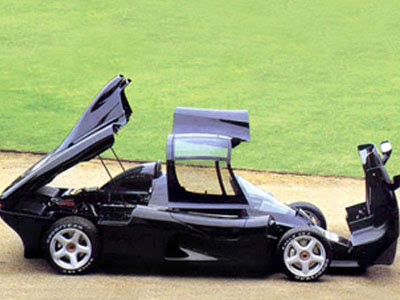
The new car featured an unusual and somewhat ugly design, features like the prominent front spoiler, tandem seating, cockpit shaped roof and protruding engine scoop stood out from other vehicles. Other features of the car which were rather extreme included the carbon fiber chassis and OX99 engine which were borrowed from the F1 car.
Budget disagreements meant the Yamaha OX99-11 project was taken from IAD and handed over to Ypsilon Technology, who were given 6 months to finish the project. A further blow to the project was came in the form of a financial crisis which hit Japan and it was decided that there wouldn't be enough buyers capable of handing over the vast sums of money needed to buy the car. In 1994 the Yamaha OX99-11 project was axed. By this point only 3 prototypes had been constructed.
Labels: Design Car, prototype, Spors Car, Supercars, Yamaha
The Yamaha OX99-11 was a supspercar designed by IAD, an English engineering consultancy, and Yamaha subsidiary Yilon Technology.
While the Yamaha OX99-11 was originally slated to appear in 1994, the roots of the OX99-11 project began in 1989 when Yamaha began competing in Formula One, later this spawned the desire to create a supercar based on Formula One technology.
Despite the fact the Formula One team was less than competitive, a new engine called the OX99 appeared in 1991, helping to give the new car a name.

The new car featured an unusual and somewhat ugly design, features like the prominent front spoiler, tandem seating, cockpit shaped roof and protruding engine scoop stood out from other vehicles. Other features of the car which were rather extreme included the carbon fiber chassis and OX99 engine which were borrowed from the F1 car.
Budget disagreements meant the Yamaha OX99-11 project was taken from IAD and handed over to Ypsilon Technology, who were given 6 months to finish the project. A further blow to the project was came in the form of a financial crisis which hit Japan and it was decided that there wouldn't be enough buyers capable of handing over the vast sums of money needed to buy the car. In 1994 the Yamaha OX99-11 project was axed. By this point only 3 prototypes had been constructed.
Labels: Design Car, prototype, Spors Car, Supercars, Yamaha
Cardi Curara is a convertible 2 seat sports car from Russia. Power for the Curara comes from a front mounted BMW V12 engine supplying power to the rear wheels.
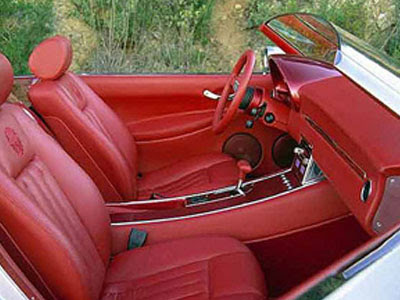
The chisled styling of the Cardi Curara was highly advanced for its time. The front end is dominated by the large central air intake and slit like headlights on either side. Below are two prominent circular driving lights sculpted into the bodywork. At the rear, the spare wheel is sunk into the bootlid in a modern twist on the style often found on 1930's sports cars. The taillights are almost invisible, recessed into a single slit running the width of the vehicle.
Labels: Cardi Curara, Spors Car
Cardi Curara is a convertible 2 seat sports car from Russia. Power for the Curara comes from a front mounted BMW V12 engine supplying power to the rear wheels.

The chisled styling of the Cardi Curara was highly advanced for its time. The front end is dominated by the large central air intake and slit like headlights on either side. Below are two prominent circular driving lights sculpted into the bodywork. At the rear, the spare wheel is sunk into the bootlid in a modern twist on the style often found on 1930's sports cars. The taillights are almost invisible, recessed into a single slit running the width of the vehicle.
Labels: Cardi Curara, Spors Car
The Chrysler Firepower is an attractive and powerful concept, reaching 60 miles an hour in less than 4.5 seconds and continuing on to 175mph.
The Chrysler Firepower is based on a Dodge Viper chassis, and it's not impossible to see a resemblance. Muscular rear arches, wide low and flat bonnet and a cockpit pushed to the extreme rear of the car.
The rear view, especially the taillights and boot lid, have a distinct Aston Martin vibe. This similarity is not by accident, both cars are intended as luxury tourers designed to compete in the same market. Although the Firepower would probably be termed 'the poor mans Aston Martin.

The Chrysler Firepower is an attractive and powerful concept, reaching 60 miles an hour in less than 4.5 seconds and continuing on to 175mph.
The Chrysler Firepower is based on a Dodge Viper chassis, and it's not impossible to see a resemblance. Muscular rear arches, wide low and flat bonnet and a cockpit pushed to the extreme rear of the car.
The rear view, especially the taillights and boot lid, have a distinct Aston Martin vibe. This similarity is not by accident, both cars are intended as luxury tourers designed to compete in the same market. Although the Firepower would probably be termed 'the poor mans Aston Martin.

Wednesday, October 14, 2009
The LM5 was designed as a vehicle which could rekindle the drama and sophistication of the legendary McLaren F1. And while McLaren have since revealed the MP4-12C supercar, it's not exactly in the same league as the technological tour-de-force which was the original F1.
The McLaren LM5 is a concept created by Matt Williams, a graduate of Coventry University's Transportation Design degree program. The LM5 was produced as his final year project.
The styling of the F1 was primarily dictated by function. However it also retained a unique sense of character and presence. Williams thought it would be interesting to develop the brand identity of McLaren - but more specifically the F1 model - and bring it into the 21st Century. And while the LM5 concept was designed to offer a similar personality and overall stance to the F1, it was also designed to utilize more extreme and race-influenced bodywork.

The McLaren LM5 concept features the same three-seat layout with a central drivers seat as the old F1. All three sports seats have an extremely slim profile to reduce weight and free up interior space, and instead of conventional safety belts all the seats feature racing-style four-point harnesses. The multifunction steering wheel features a central display for the tachometer.
The proposed engine for the McLaren LM5 concept is a worked over 5.0 litre V10 sourced from BMW. Mounted midship in the carbon fibre pre-preg chassis this unit would make the LM5 a force to be reckoned with on both road and track.
While the LM5 is at the moment just one man's idea of what the F1's successor could look like, the design itself uses both past and present McLaren influences giving it a sense of realism. And It's important to remember that McLaren themselves have made it public knowledge that they're working on developing a successor to their most iconic car within the next couple of years.
Labels: Concept Car, Design Car, McLaren, Race Car, Spors Car, super car
The LM5 was designed as a vehicle which could rekindle the drama and sophistication of the legendary McLaren F1. And while McLaren have since revealed the MP4-12C supercar, it's not exactly in the same league as the technological tour-de-force which was the original F1.
The McLaren LM5 is a concept created by Matt Williams, a graduate of Coventry University's Transportation Design degree program. The LM5 was produced as his final year project.
The styling of the F1 was primarily dictated by function. However it also retained a unique sense of character and presence. Williams thought it would be interesting to develop the brand identity of McLaren - but more specifically the F1 model - and bring it into the 21st Century. And while the LM5 concept was designed to offer a similar personality and overall stance to the F1, it was also designed to utilize more extreme and race-influenced bodywork.

The McLaren LM5 concept features the same three-seat layout with a central drivers seat as the old F1. All three sports seats have an extremely slim profile to reduce weight and free up interior space, and instead of conventional safety belts all the seats feature racing-style four-point harnesses. The multifunction steering wheel features a central display for the tachometer.
The proposed engine for the McLaren LM5 concept is a worked over 5.0 litre V10 sourced from BMW. Mounted midship in the carbon fibre pre-preg chassis this unit would make the LM5 a force to be reckoned with on both road and track.
While the LM5 is at the moment just one man's idea of what the F1's successor could look like, the design itself uses both past and present McLaren influences giving it a sense of realism. And It's important to remember that McLaren themselves have made it public knowledge that they're working on developing a successor to their most iconic car within the next couple of years.
Labels: Concept Car, Design Car, McLaren, Race Car, Spors Car, super car
Splinter Wooden Supercar the first supercar ever to be designed and engineered using wood
Posted by haho at 7:50 AMThe Splinter is a very unusual and innovative vehicle. It's the first supercar ever to be designed and engineered using wood as the primary construction material. In the past some vehicles have used wood to various degrees in their construction, but never to the extent the Splinter does.
The Splinter is a graduate project by students at North Carolina State University. Wood has been used where possible, including the chassis, body, and even a large percentage of the suspension components and wheels.
While moving components like the suspension might seem impossible to fashion out of wood, the Splinter team realized that a leaf spring shares many traits with longbows, flexible, durable and with progressive spring rates. After research they decided to use Osage orange wood, which is the strongest wood found in North America. The front suspension therefore comprises of a laminated Osage orange wood leaf spring transversely mounted and providing suspension for both front wheels.

The wheels of the Splinter are made from rotary cut oak veneers. Each veneer was rotated 36 degrees from the previous layer to maximize grain direction alignment with the spokes. A walnut sunburst was cut for the front while a cherry sunburst was used on the back.
The mid-engined layout of the Splinter wooden supercar comprises of a 4.6 litre, twin supercharged V8 mated to a 6 speed manual gearbox and Getrag limited slip differential.
The Splinter is not intended for mass production, nor is it designed to break and performance or handling records. The design is merely to show that with intelligent and creative thinking a car can be created out of the most unlikely materials.
Labels: Design Car, Splinter, Spors Car, super car
Splinter Wooden Supercar the first supercar ever to be designed and engineered using wood
Posted by haho at 7:50 AMThe Splinter is a very unusual and innovative vehicle. It's the first supercar ever to be designed and engineered using wood as the primary construction material. In the past some vehicles have used wood to various degrees in their construction, but never to the extent the Splinter does.
The Splinter is a graduate project by students at North Carolina State University. Wood has been used where possible, including the chassis, body, and even a large percentage of the suspension components and wheels.
While moving components like the suspension might seem impossible to fashion out of wood, the Splinter team realized that a leaf spring shares many traits with longbows, flexible, durable and with progressive spring rates. After research they decided to use Osage orange wood, which is the strongest wood found in North America. The front suspension therefore comprises of a laminated Osage orange wood leaf spring transversely mounted and providing suspension for both front wheels.

The wheels of the Splinter are made from rotary cut oak veneers. Each veneer was rotated 36 degrees from the previous layer to maximize grain direction alignment with the spokes. A walnut sunburst was cut for the front while a cherry sunburst was used on the back.
The mid-engined layout of the Splinter wooden supercar comprises of a 4.6 litre, twin supercharged V8 mated to a 6 speed manual gearbox and Getrag limited slip differential.
The Splinter is not intended for mass production, nor is it designed to break and performance or handling records. The design is merely to show that with intelligent and creative thinking a car can be created out of the most unlikely materials.
Labels: Design Car, Splinter, Spors Car, super car
Saturday, October 10, 2009
The Aston Martin Rally GT, based on the Aston Martin V8 Vantage, was developed by Aston Martin Racing and automotive engineering specialists Prodrive (see Prodrive P2) for use in rally racing.
The Aston Martin Rally GT was extensively engineered by Prodrive, and like the DBRS9 based on the Aston Martin DB9, the Rally GT is based on a standard road car's chassis. However the Rally GT has been fitted with a Prodrive rollcage, a tuned and more responsive version of the standard car's 4.3 litre V8, and new competition Eibach springs and adjustable EXE-TC dampers. The 6-speed transmission is the same unit found in the road car, but it can be upgraded to a close ratio dog engagement gearbox specifically developed for the Aston Martin Rally GT.
Labels: Aston Martin, RacingCar, Rally GT, Spors Car
The Aston Martin Rally GT, based on the Aston Martin V8 Vantage, was developed by Aston Martin Racing and automotive engineering specialists Prodrive (see Prodrive P2) for use in rally racing.
The Aston Martin Rally GT was extensively engineered by Prodrive, and like the DBRS9 based on the Aston Martin DB9, the Rally GT is based on a standard road car's chassis. However the Rally GT has been fitted with a Prodrive rollcage, a tuned and more responsive version of the standard car's 4.3 litre V8, and new competition Eibach springs and adjustable EXE-TC dampers. The 6-speed transmission is the same unit found in the road car, but it can be upgraded to a close ratio dog engagement gearbox specifically developed for the Aston Martin Rally GT.
Labels: Aston Martin, RacingCar, Rally GT, Spors Car
Tuesday, January 15, 2008

Labels: AC, Spors Car, Sport Car Coupe

